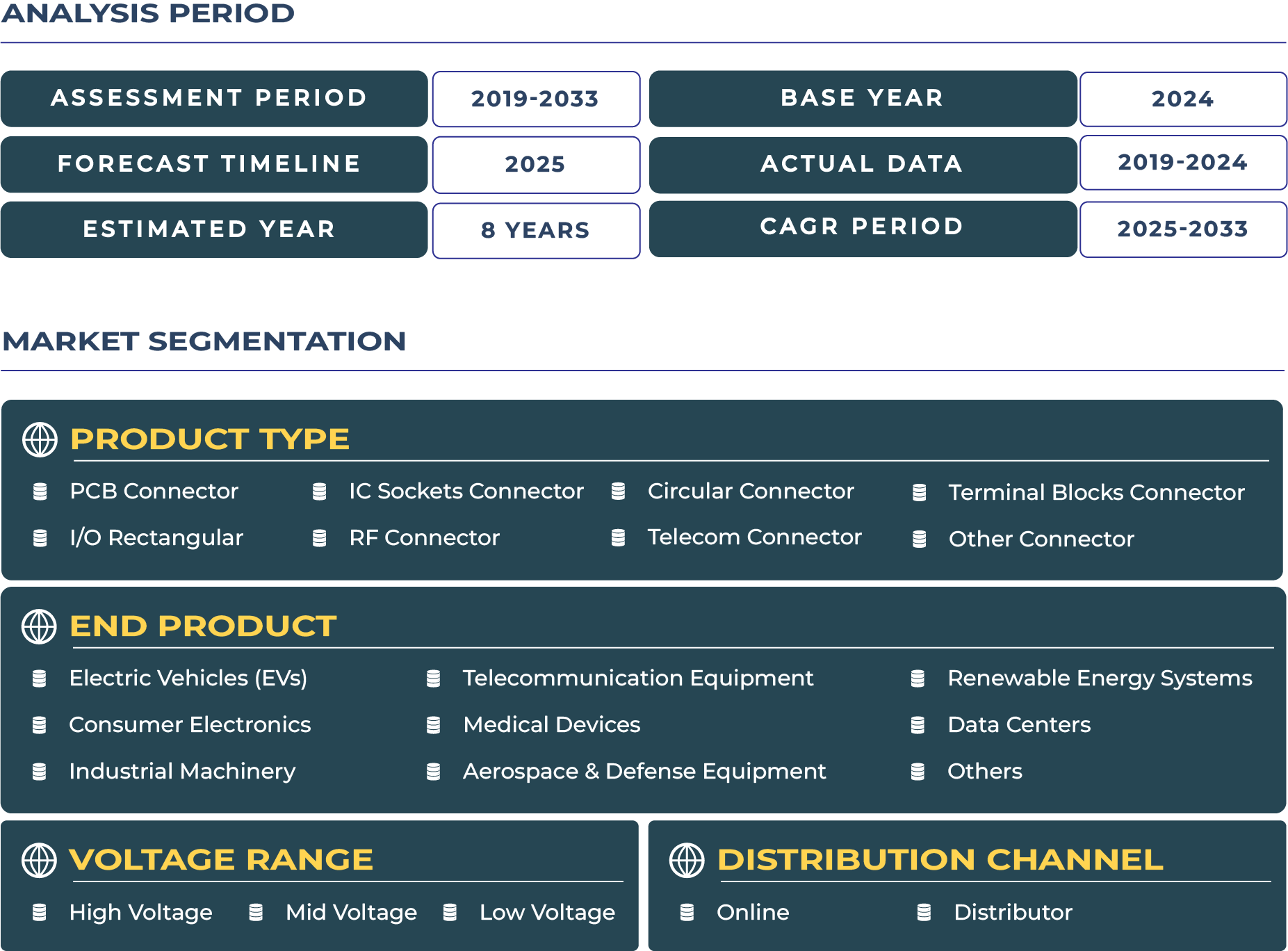Taiwan Connector Market Outlook
Printed & Flexible Connectors Elevate Taiwan’s Next‑Gen Electronics Innovation
Taiwan’s electronics sector is witnessing a paradigm shift driven by printed, flexible, and virtualization-ready connectors, fueling advancements across space, automotive, and consumer technologies. The country’s deep ecosystem—spanning PCB assembly, advanced materials, and virtual simulation—supports this evolution. Taiwan connector market is projected to reach USD 1.12 billion by 2033, marking a CAGR of 7.2% from 2025 to 2033. This robust growth is driven by the increasing demand for advanced electronics in sectors such as automotive, renewable energy, and smart devices, as well as Taiwan’s strategic investments in flexible and printed circuit technologies.
Space Missions & Renewable Energy
Taiwan’s entrance into small‑satellite manufacturing and commercialization—led by multiple NSF-funded firms—spurs demand for reliable, lightweight flexible connectors. Equally, Taiwan’s aggressive push for carbon‑free energy via the T‑REC framework supports renewable installations requiring flexible solar connectors suited for bending arrays on curved rooftops.
Miniaturization Limits & Connector Fatigue
As connector geometries shrink and flex life increases, new challenges arise. Accelerated lab tests show printed connectors face fatigue after 10,000 flex cycles, raising concerns for AR devices and foldable electronics. Furthermore, ultra-miniaturization increases manufacturing costs and reduces fault tolerance—requiring advances in materials and precision tooling to maintain viability.
Flexible Flat & Printed Connector Adoption
Flexible printed connectors are becoming standard in wearable health sensors and automotive infotainment harnesses. Digital twin‑validated connector libraries enable OEMs to pre‑verify electrical and mechanical performance.
Virtual Connector Libraries for Automotive Simulation
Connector ecosystem providers are offering simulation-ready libraries used in automotive E/E virtual prototyping. Taiwanese EV startups have adopted these to reduce physical prototyping by 30%, accelerate integration cycles, and validate EMI behavior.
Opportunities to Capture:
- Foldable Display & Smart Textile Connectors – Develop printed, ultra-thin connectors for rollable iPad-like devices and wearable sweaters equipped with biometric sensing.
- Simulation‑Ready Connector Toolkits for OEMs – Offer integrated CAD/EDA connector models that support system-level simulation (thermal, electrical, mechanical), reducing crash risk and shortening time‑to‑market.







